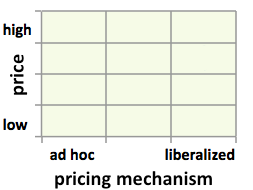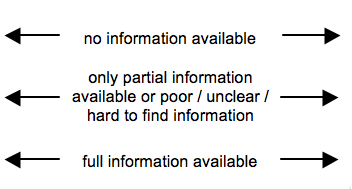Knowledge fuels change - Support energypedia!
For over 10 years, energypedia has been connecting energy experts around the world — helping them share knowledge, learn from each other, and accelerate the global energy transition.
Today, we ask for your support to keep this platform free and accessible to all.
Even a small contribution makes a big difference! If just 10–20% of our 60,000+ monthly visitors donated the equivalent of a cup of coffee — €5 — Energypedia would be fully funded for a whole year.
Is the knowledge you’ve gained through Energypedia this year worth €5 or more?
Your donation keeps the platform running, helps us create new knowledge products, and contributes directly to achieving SDG 7.
Thank you for your support, your donation, big or small, truly matters!
Difference between revisions of "Fuel Prices Sri Lanka"
***** (***** | *****) m |
***** (***** | *****) |
||
| Line 1: | Line 1: | ||
{{Fuel Price Factsheet | {{Fuel Price Factsheet | ||
|Fuel Price Country=Sri Lanka | |Fuel Price Country=Sri Lanka | ||
| − | |||
| − | |||
| − | |||
|Fuel Pricing Policies=There are only two major fuel distribution companies in Sri Lanka: Ceylon Petroleum Company (CPC) and Lanka IOC, a subsidiary of Indian Oil Company. | |Fuel Pricing Policies=There are only two major fuel distribution companies in Sri Lanka: Ceylon Petroleum Company (CPC) and Lanka IOC, a subsidiary of Indian Oil Company. | ||
| Line 12: | Line 9: | ||
CPC publishes fuel prices incl. historic fuel prices on their website (http://www.ceypetco.gov.lk). | CPC publishes fuel prices incl. historic fuel prices on their website (http://www.ceypetco.gov.lk). | ||
| − | No | + | "Following a balance-of-payment crisis, government adopted a pricing formula, which was abandoned in 2004. The formula was revived in Jul 2007 for two months before it was abandoned again. LPG price increases require prior authorization by Consumer Affairs Authority. Government sets base prices, uniform throughout the country, of gasoline, diesel, and kerosene sold by Ceylon Petroleum Corporation (CPC). Lanka Indian Oil Corporation (IOC) is free to set its prices, but given CPC controls two-thirds of the market and is the price setter, CPC’s prices effectively limit Lanka IOC’s price movement. The VAT on gasoline was reduced from 15% to 5% in Jan 2008 and then increased to 12% in Jan 2009. CPC did not adjust prices in 2010, except subsidized fuel oil to Ceylon Electricity Board (CEB). CPC froze prices of other fuels between Dec 2009 and April 2011. CPC made only two price adjustments in 2011 and one in 2012. Import duties are frequently reduced or waived, particularly on gasoline, to compensate oil companies for losses suffered. Social Responsibility Levy and VAT on gasoline imports were removed in 2010. Prices were raised twice in 2011. Government increased gasoline (by 9%), diesel (31%), and kerosene (49%) prices in Feb 2012, sparking protests. Some private bus operators stopped operating, and violence broke out when fishermen protested, killing one. Although the price of fuel oil sold to CEB was raised by 50% in Feb 2012, it remains subsidized. CPC entered into a series of contracts to hedge a portion of its oil imports beginning in 2007. Hedging proved to be extremely costly when oil prices collapsed in the last few months of 2008, and led the supreme court to order the Treasury to handle fuel imports in between Dec 2008 and Nov 2009. Lanka IOC also reported losses from hedging. The Iranian government granted an interest-free credit facility for 210 days to purchase crude in 2008, and CPC used up to US$1.2 billion and repaid US$0.845 billion by end-2008. CPC’s operational losses were SL Rs26 billion (US$0.23 billion) in 2009, SL Rs27 billion (US$0.24 billion) in 2010, and SL Rs94 billion (US$0.85 billion) in 2011, due to provision of heavily subsidized fuel oil to the power sector, price control, and non-payment by several institutions, particularly CEB. SL Rs55 billion (US$480 million) worth of treasury bonds were issued in Jan 2012 to settle outstanding debts owed to CPC by CEB and other state-owned enterprises. Historical prices are posted on CPC’s Web site." (Source: Kojima, Masami. (2013, forthcoming). “Petroleum product pricing and complementary policies:Experience of 65 developing countries since 2009.” Washington DC: World Bank.) |
| + | |Fuel Currency=LKR | ||
| + | |Fuel Price Exchange Rate=111.543 | ||
| + | |Fuel Price Composition Annotation=No information available. | ||
|Fuel Matrix Pricing Mechanism=2 | |Fuel Matrix Pricing Mechanism=2 | ||
|Fuel Matrix Price Level=2 | |Fuel Matrix Price Level=2 | ||
Revision as of 15:29, 13 February 2013
Part of: GIZ International Fuel Price database
Also see: Sri Lanka Energy Situation
Fuel Pricing Policies
| Local Currency: | LKR |
| Exchange Rate: | 111.543
|
| Last Update: |
There are only two major fuel distribution companies in Sri Lanka: Ceylon Petroleum Company (CPC) and Lanka IOC, a subsidiary of Indian Oil Company.
In 2002, Sri Lanka introduces a fuel price formula, updating prices monthly and following international prices. A few years later, this formula was abandoned by a new president. In 2007, the government decided to re-install a fuel price formula (→App. A1). However, also this formula did not last long, being rejected through Sri Lankas Supreme Court in late 2008 (→App. A2, A4).
As of May 2011, still no fuel price formula came into effect again. Prices are set by CPC, in accordance with the government, changing only a few times a year. However, several experts and politicians strongly recommend installing a formula again, to prevent oil companies from having huge losses and also the customers from the intransparent arbitrariness of fuel pricing (→App. A3).
CPC publishes fuel prices incl. historic fuel prices on their website (http://www.ceypetco.gov.lk).
"Following a balance-of-payment crisis, government adopted a pricing formula, which was abandoned in 2004. The formula was revived in Jul 2007 for two months before it was abandoned again. LPG price increases require prior authorization by Consumer Affairs Authority. Government sets base prices, uniform throughout the country, of gasoline, diesel, and kerosene sold by Ceylon Petroleum Corporation (CPC). Lanka Indian Oil Corporation (IOC) is free to set its prices, but given CPC controls two-thirds of the market and is the price setter, CPC’s prices effectively limit Lanka IOC’s price movement. The VAT on gasoline was reduced from 15% to 5% in Jan 2008 and then increased to 12% in Jan 2009. CPC did not adjust prices in 2010, except subsidized fuel oil to Ceylon Electricity Board (CEB). CPC froze prices of other fuels between Dec 2009 and April 2011. CPC made only two price adjustments in 2011 and one in 2012. Import duties are frequently reduced or waived, particularly on gasoline, to compensate oil companies for losses suffered. Social Responsibility Levy and VAT on gasoline imports were removed in 2010. Prices were raised twice in 2011. Government increased gasoline (by 9%), diesel (31%), and kerosene (49%) prices in Feb 2012, sparking protests. Some private bus operators stopped operating, and violence broke out when fishermen protested, killing one. Although the price of fuel oil sold to CEB was raised by 50% in Feb 2012, it remains subsidized. CPC entered into a series of contracts to hedge a portion of its oil imports beginning in 2007. Hedging proved to be extremely costly when oil prices collapsed in the last few months of 2008, and led the supreme court to order the Treasury to handle fuel imports in between Dec 2008 and Nov 2009. Lanka IOC also reported losses from hedging. The Iranian government granted an interest-free credit facility for 210 days to purchase crude in 2008, and CPC used up to US$1.2 billion and repaid US$0.845 billion by end-2008. CPC’s operational losses were SL Rs26 billion (US$0.23 billion) in 2009, SL Rs27 billion (US$0.24 billion) in 2010, and SL Rs94 billion (US$0.85 billion) in 2011, due to provision of heavily subsidized fuel oil to the power sector, price control, and non-payment by several institutions, particularly CEB. SL Rs55 billion (US$480 million) worth of treasury bonds were issued in Jan 2012 to settle outstanding debts owed to CPC by CEB and other state-owned enterprises. Historical prices are posted on CPC’s Web site." (Source: Kojima, Masami. (2013, forthcoming). “Petroleum product pricing and complementary policies:Experience of 65 developing countries since 2009.” Washington DC: World Bank.)
Fuel Prices and Trends
| Gasoline 95 Octane | Diesel | |
|---|---|---|
| in USD* |
|
|
| in Local Currency |
|
|
* benchmark lines: green=US price; grey=price in Spain; red=price of Crude Oil
Fuel Price Composition
Price composition.
No information available.
At a Glance
| Regulation-Price-Matrix |
| ||||
 |

|

|

| ||
Sources to the Public
| Type of Information | Web-Link / Source |
|---|---|
| Other Information | http://www.ceypetco.gov.lk/ |
| Pump prices and margins | http://www.ceypetco.gov.lk/Marketing.htm |
| Pump prices and margins | http://www.ceypetco.gov.lk/History.htm |
Contact
Please find more information on GIZ International Fuel Price Database and http://www.giz.de/fuelprices
The following coordinate was not recognized: {{#geocode: Sri Lanka|google }}.



















